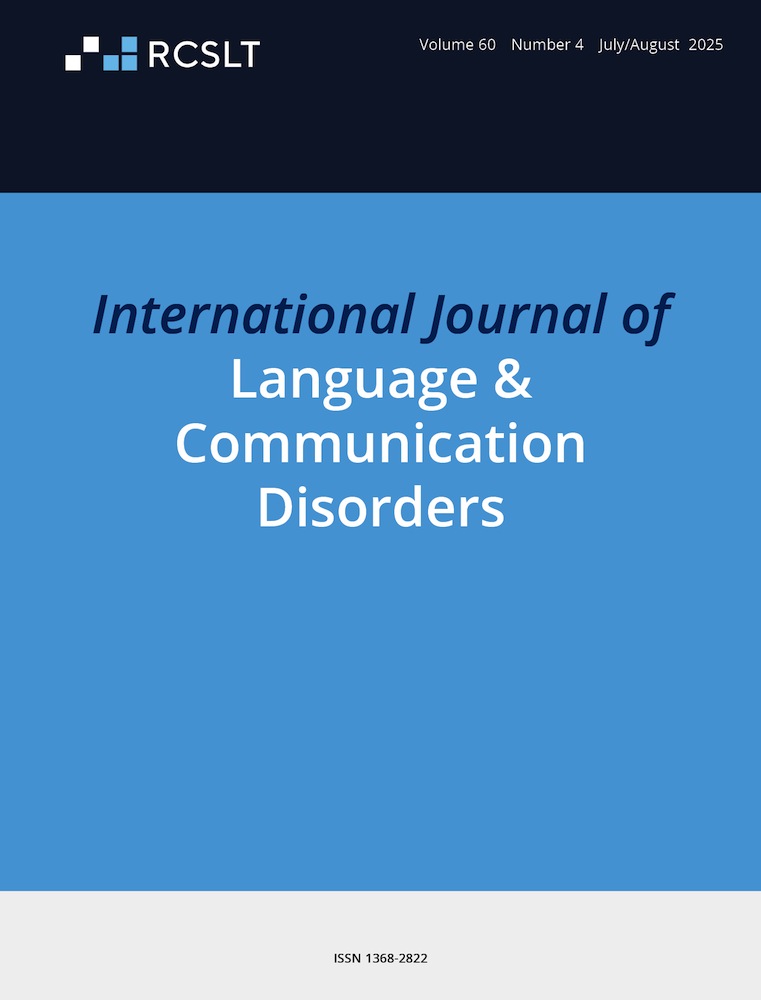Sentential Complement Clause Sentence Constructions of Early School-Age Children With and Without Developmental Language Disorder
ABSTRACT
Introduction
It is well documented that preschoolers with DLD produce first instances of sentential complement clause sentences later than same-age peers with typical language. However, it remains unknown whether children with DLD are limited in their production of a variety of sentential complement clause sentences.
Aims
Using a sentence imitation task, we investigated whether preschoolers with DLD present with deficits in the production of sentential complement clause sentences with matrix clauses that are semantically and syntactically varied. We contrasted these sentences with sentential complement clause sentences that contain matrix clauses that are semantically and syntactically limited. We refer to these matrix clauses as true matrix clauses and formulaic matrix clauses, respectively.
Methods and Procedures
Twenty-eight 5-year-old children (DLD, n = 14) participated in this study. The experimental task was a 50-item sentence imitation task. Five complement clause verbs (CCVs)—think, know, guess, bet, remember—were used in sentential complement clause sentences containing either formulaic matrix clauses or true matrix clauses.
Outcomes and Results
Although children with DLD presented with lower proficiency in all sentential complement clause sentences, children with DLD did not show significantly greater difficulty with sentences containing true matrix clauses than sentences containing formulaic matrix clauses.
Conclusions and Implications
Sentential complement clause sentences pose a significant challenge for children with DLD.
WHAT THIS PAPER ADDS
- Previous research reveals that children with DLD present with deficits in imitating later-developing complex syntax constructions, such as relative clause sentences containing multiple propositions. It is unknown whether these deficits extend to other complex syntax types containing multiple propositions, such as sentential complement clause sentences.
- Our study found that children with DLD did not present with salient deficits in sentential complement clause sentences containing multiple propositions. However, children with DLD may present with deficits in the production of a variety of sentential complement clause sentences.
- Our findings suggest that children with DLD struggle with all sentential complement clause sentence types. We discuss the importance of selecting appropriate complex syntax structures when planning complex syntax intervention.
Conflicts of Interest
The authors declare no conflicts of interest.
Open Research
Data Availability Statement
The data that support the findings of this study are available on request from the corresponding author. The data are not publicly available due to privacy or ethical restrictions.




